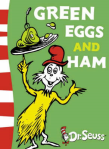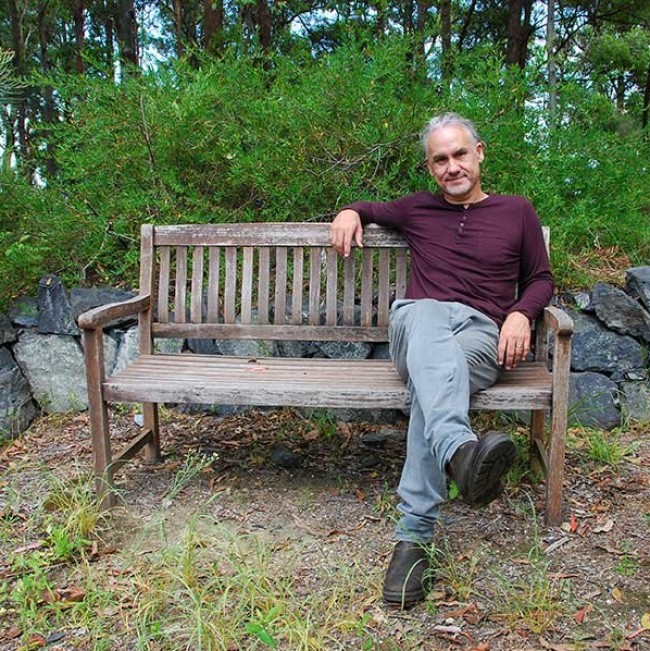July is the month that we celebrate NAIDOC in Australia.
I always think that NAIDOC stands for National Aboriginal and Islander Day of Celebration. But it doesn’t. It stands for National Aborigines and Islanders Day Observance Committee.
The history of NAIDOC can be found at the following link http://www.naidoc.org.au/about. Whilst you are visiting that website, check out the poster gallery at http://www.naidoc.org.au/poster-gallery.

2016 NAIDOC poster by Lani Balzan
NAIDOC is a week-long celebration and there are many free activities available in the community open to anyone of any culture, to enjoy and celebrate Aboriginal Culture.
So, for NAIDOC I would like to introduce you to a book called “When I was little like you”, written by Mary Malbunka in 2003.
When you were little, did your grandparents talk about what life was like when they were young? And did you listen?
My Aboriginal grandfather loved to tell stories of growing up in Gamillaroi Country (Inverell). It felt like I knew that Country through his stories even though I had never visited. My grandmother also enjoyed talking about the ‘old days’. I think as a society, we have lost the art of telling stories and sharing culture. And we have certainly lost too much Aboriginal culture , wisdom, and knowledge. I think that our craving for story is reflected in the proliferation of reality TV shows and the popularity of YouTube in these modern times.
“When I was little, like you” is a delightful story of a child growing up in the Western Desert Country. Aunty Mary tells of her childhood playing in the bush, being cared for by family and the old ones, catching food, the animals, the plants, the land, the stories, and how White culture impacted Aboriginal life.
Aunty Mary also illustrated the book, and the drawings are so accessible to young children because they support the telling of the story. However, this is not a story that can be told in one sitting. It needs to be read over many days and weeks. The story is a great place to start to talk to young ones about the history of Aboriginal people after the English took over the place. White Australians used to regard England as the ‘Mother Country’, and Aboriginal people regarded the Country as their Mother. The book also introduces children to the structure and sounds of an Aboriginal language.


Aunty Mary died in 2004. She was only 45 years old. Nadia Wheatley remembers Aunty Mary and how her story was written, and respectfully details why “When I was little, like you” is such an important story (http://nadiawheatley.com/remembering-mary-malbunka/) …
Remembering Mary Malbunka
I remember very clearly the time when Mary Malbunka began to tell me her story. We were in the kitchen at Papunya School, using the long tables for making ‘circle stories’ — a way we had of recording the story of our lives. I was sitting beside Mary as she began filling in the circle for her ngurra — her traditional country.
‘I was born in the creek at Haasts Bluff in 1959,’ Mary Malbunka whispered to me, and I remember that my mind gave a little jump at the mention of the date. I hadn’t realised that Mary was ten years younger than me. Like most middle-aged adults in Papunya, she suffered from the poor health that was the legacy of the white-flour-and-sugar diet to which Aboriginal people were introduced at the missions and government settlements. When I met Mary Malbunka in 1998 she had already been diagnosed with kidney trouble, and she knew that there was a strong chance that one day she would have to leave Papunya, her family and her job, and go to Alice Springs for dialysis. For the moment, however, she was working full-time at the school.
It’s not ‘right way’ to ask questions, so I didn’t ask Mary to tell me any more, but some of this story about food began to emerge as Mary illustrated her circle story. She drew a picture of herself as a child, together with some other children, riding a donkey and a camel, and she wrote a description of going out with family to get bush tucker. Anyone who has read Mary Malbunka’s picture-book memoir of her childhood, When I Was Little, Like You, will know that this is one of its recurrent themes. Whenever the opportunity arose, young Mary and her extended family left the settlement and went out bush to get honey ants, sugarbag, all sorts of fruits and berries, roots and seeds, witchetty grubs, lizards, goanna, echidna, kangaroo, emu, bush turkey… And this communal act of food-getting did not feed the body alone, for going bush gave the elders the chance to teach the young ones the lessons of their ancestry, the traditions of their country, and the wheels within wheels of the Tjukurrpa yara, the stories of religion and law.
To read Mary Malbunka’s own story is to be reminded continually of a dichotomy between a world in which kindergarten children were handed white bread sandwiches and Vitamin C tablets by well-meaning but ignorant teachers, and a world in which the mothers and aunties would teach the children as they walked through their country gathering the grass-seed for nutritious bread, and picking the akatjirri (bush tomatoes) which scientists now declare to be one of the richest sources of Vitamin C available.
Any Anangu life is lived within a context of family, community and country. A child born out of her traditional country (as Mary was at Haasts Bluff) still belongs to her ngurra through language and Tjukurrpa (Law). As Mary Malbunka explains, Warlpiri was ‘the side for her mother’s family’, whereas her father’s people were Pintupi/Luritja. Mention of this ancestry immediately takes us a couple of hundred kilometres north from Papunya, into the Warlpiri lands that stretch up past Yuendumu, and four hundred kilometres west, to the Pintupi ngurra around Walungurru (Kintore).
If we look at the Papunya School Book of Country and History, we can see a photograph of Mary’s paternal grandfather Kamutu, who in 1930 was living at the beautiful oasis at Ilypili when the Lutheran pastor from the Finke River Mission made the first white contact with this group of Pintupi. Pastor Albrecht recorded how healthy and contented these people were, and how well they lived in their demanding environment. Within a decade, however, the devastation wrought upon the land by the cattle stations would be so great that Kamutu would have no option but to bring his people to the ration depot established by Lutheran evangelists, far to the east, at the place that whitefellers called Haasts Bluff. Meanwhile, to the north, the Warlpiri were reeling from ‘the killing times’, which had begun with the Coniston Massacre of 1928. Many were forced to leave their ngurra and flee to the refuge provided under the umbrella of the Lutheran Mission. This tale of dispossession and exile is the background to how Mary Malbunka’s parents came to ‘sit down together’ at Haasts Bluff.
‘When I was about five,’ Mary records, ‘the mission boss said my family had to go to the government settlement at Papunya.’ To the little girl, forced to move home in ‘a government motor car’, the new place seemed at first to be ‘really big’. No doubt it was also really strange and scarey.
Again from the Papunya School Book and from other secondary sources, we know that Papunya was founded in 1959 by the federal government. With the Assimilation Policy in full swing, this was part of the initiative to make Aboriginal people live and think like Europeans. By the time Mary and her family arrived, the settlement had about a thousand Anangu living there, from five different ngurra, five different languages. In order for different groups to live together in this way, people were forced to break traditional law, and many Anangu saw Papunya as ‘a mix-up place’. It was also a place of great sorrow. For example, of the seventy-four Pintupi brought in from the desert to live there over 1963-4, half of these newcomers died within the first couple of years. This, of course, was at exactly the time when Mary Malbunka was a little girl, building ngurra ngurra (cubby houses) with her girlfriends, nicking food from the settlement garden, and creeping under the barbed wire into the weekly picture show. If there were a background soundtrack to this story, it would be the keening that goes on in the weeks between a death and a funeral.
It was after one of these times of Sorry Business that Mary’s parents shifted from north camp (where they had dwelled amongst other Warlpiri families) to west camp, where her father’s people lived. It was around now that Mary decided to stop living with her parents and to live instead with her uncle Long Jack, and her auntie, and her cousins.
This uncle appears in Mary’s book in the story about going for sugarbag, and we also meet him as the elder who used to teach the pipirri (children) about tracking, when the family went out to camp at Ikirriki. As well as being a Lutheran pastor, Long Jack Phillipus is one of the senior ‘painting men’ of Papunya. Indeed, he is acknowledged as being one of the men who painted the tjupi (honey ants) on the wall at Papunya School in the winter of 1971. This was the catalyst for the whole movement that we know as Western Desert Art.
This way of painting — which had been done on bodies, earth and rocks for countless millennia — is always a collaborative act. The Western Desert tradition of art is a whole mindshift away from our European notion of the individual artist expressing a unique personal vision. Even when it happens that only one person applies the paint, the artist is still telling (or rather, re-telling) a collective and communal part of the Tjukurrpa — the Law and the Lore. This is the context for the way in which Mary learned to paint in the Phillipus family: with her uncle and aunt, with her cousins Charlotte and Patricia, with all the other pipirri.
Yet this wasn’t all that Mary learned from her family. Anangu don’t see learning as something that mysteriously happens to the child in the classroom, but rather as something that children know from birth, and bring from the community into the schoolground. However, when Mary went to Papunya School, in the 1960s and 1970s, Indigenous knowledge was not recognised by the authorities. Students had to have a shower on arrival and change from their camp clothes to uniform. This was a symbolic act: the Anangu way of life was to be washed off with the red desert dust. Mary records how she sometimes used to hide her camp clothes under her uniform T-shirt. Then she would put up her hand and ask to go to the toilet — where she would get changed before running off ‘to play for the day’. She explains, ‘School was hard to understand because we were talking Luritja outside, but in the classroom we were talking only English.’ Despite the fact that most of the content of the curriculum was totally irrelevant to her life, Mary stayed at school until the age of seventeen.
Naturally, Mary’s story of her childhood began with what she had told me so long before, when she had been illustrating the circle of her history: ‘I was born at Haasts Bluff, in the karru. That was in 1959.’ And her book ended with the words that are used to end a telephone call, or a discussion, or a story, or a life: ‘Kala. Palya.’ Which means something like: ‘It is finished. It is good.’
Mary leaves us with the beautiful gift of her own story of childhood, which all pipirri can share.
Kala. Palya!
A teachers guide for the book is available for download here.

 Image source:
Image source: 











